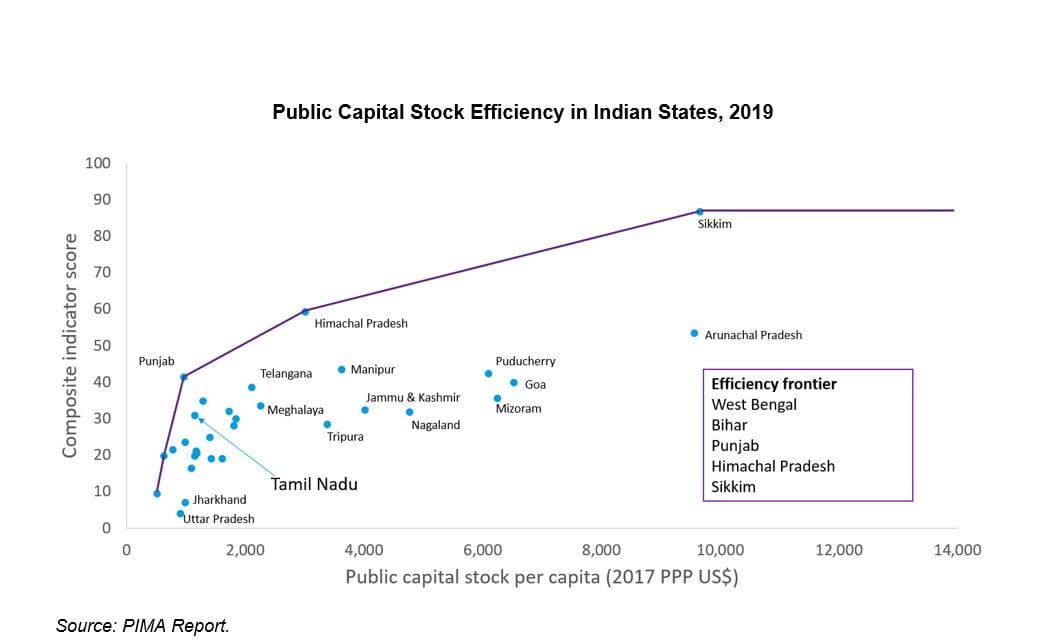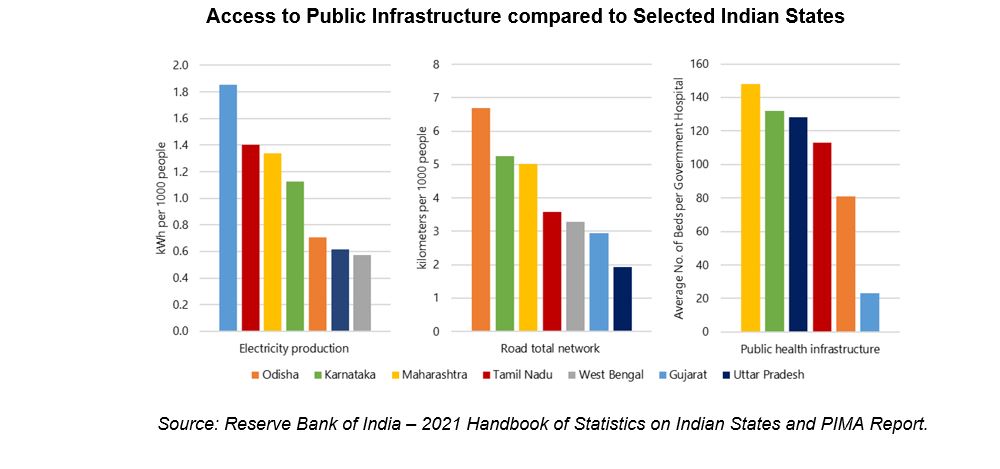Tamil Nadu, with a population of 77 million and an economy over US$250 billion (the second largest in India), is both large and rapidly growing. The state government spends around US$5 billion on capital investment each year and has ambitious plans to scale this up in the future. The Fiscal Affairs Department of the IMF recently concluded a Public Investment Management Assessment (PIMA) of the state as well as the related climate module. This was only the second sub-national PIMA to be completed in the world, and the first in India.
The PIMA framework proved to be well adapted to being applied at sub-national level, with only minor adjustments being necessary. Given India’s strong culture of collecting statistics, data are available to estimate the size of the public capital stock for each state, and to compare investment efficiency across states, in a similar manner to country-level PIMA assessments.
As a comparatively industrialized and wealthy state Tamil Nadu has a sizeable stock of public assets (approximately US$120 billion) and a well-established set of institutions to manage their use. Its public investment is relatively efficient, with an efficiency index of 70%, higher than many similar sized states (see chart). Tamil Nadu scores particularly well on the outcomes achieved from its social infrastructure, notably in health and education.
Several economic studies and reports find that Tamil Nadu has well-developed social, physical, and industrial infrastructure, and virtual connectivity. However, access to infrastructure varies between sectors with some gaps, for example in the road network, which could be further strengthened (see chart).
With India’s longest coastline and a tropical monsoon climate, climate risks pose a major threat to Tamil Nadu’s public infrastructure. The state was consequently interested in applying the IMF’s Climate PIMA methodology. The results show that within the framework set by the Indian government, Tamil Nadu has taken decisive action to address climate-related challenges through its public investment. The state has already made significant capital investments in both adaptation and mitigation measures – becoming a leader in wind and solar energy amongst Indian states, for example, and making significant progress in energy efficiency. It has also prepared a comprehensive disaster risk management strategy and has put adequate financing mechanisms in place.
Coordination across Tamil Nadu and its many local governments has been strengthened by the establishment of the Tamil Nadu Green Climate Company acting as a focal point for mainstreaming climate concerns into state policies. Meanwhile the Center for Climate Change and Disaster Management, established within Anna University in Chennai, serves as a hub for developing expertise on climate change issues, including modeling climate change projections for the state, and developing exposure maps to climate related hazards. This work will help the authorities target “climate proofing” spending on existing and new infrastructure. If this information is made freely available, it has the potential to benefit both the private and the public sector.
Tamil Nadu is also making efforts to strengthen public access to government information and improve fiscal transparency. In recent years, for example, it has published a citizen’s budget that helps present the government’s finances in a manner easier for journalists and the public to digest.
Given this experience, there is certainly potential for other states to benefit from PIMA assessments. With total public investment spending in India approaching US$200 billion per year, of which over 50 percent comes from state budgets, strengthening public investment management at state level has potentially large benefits for India’s future.








